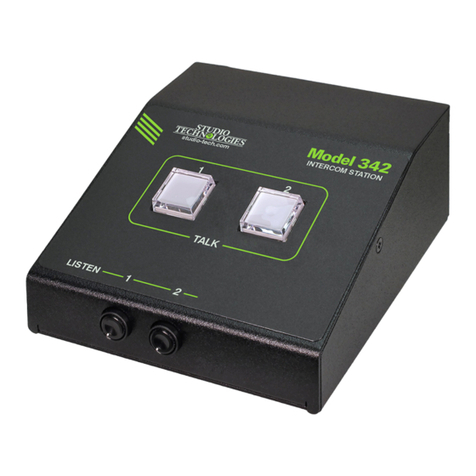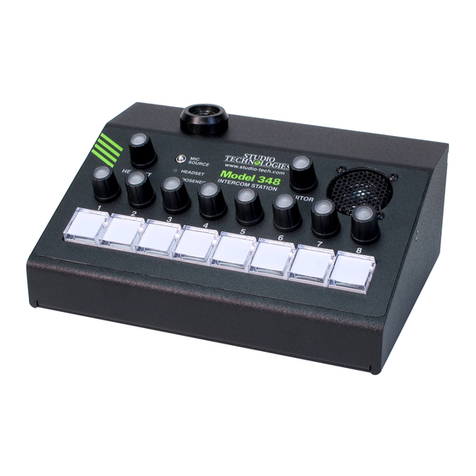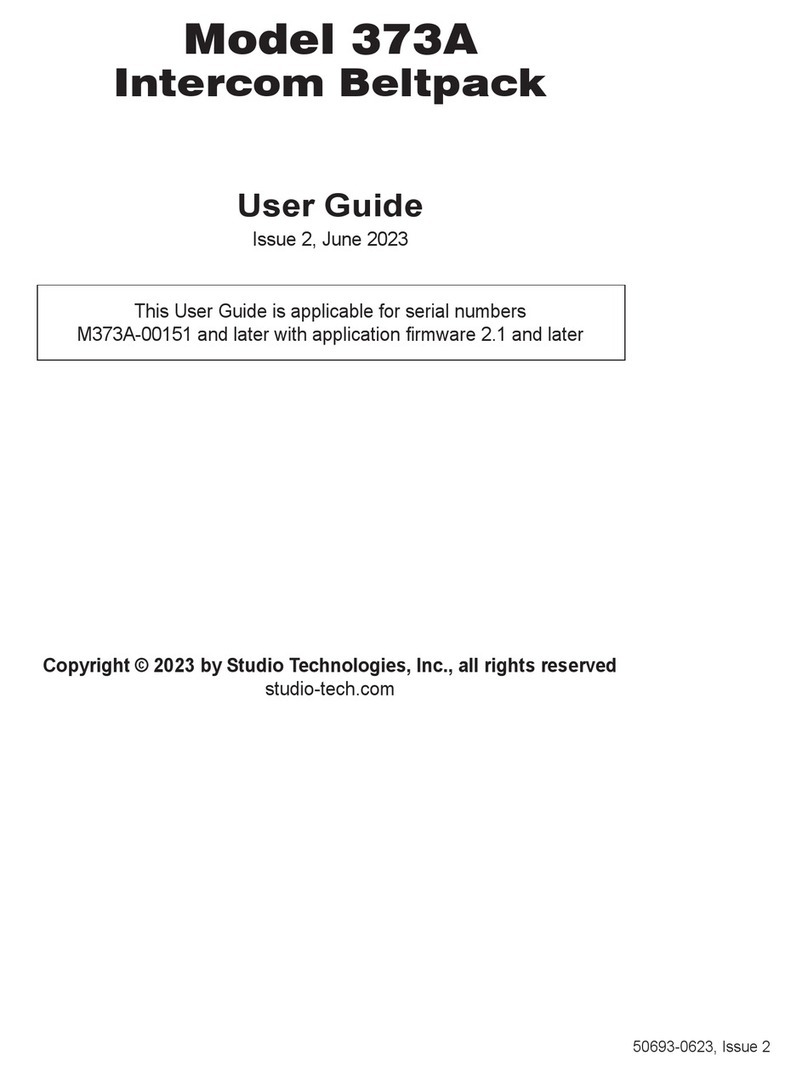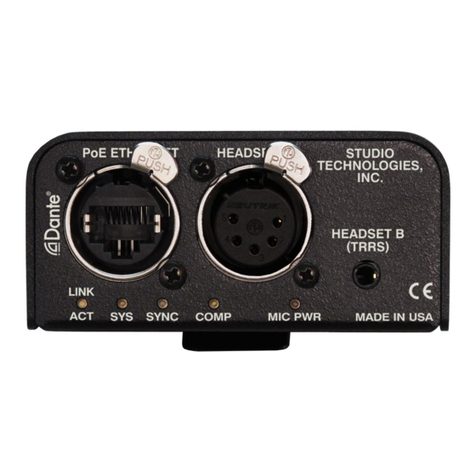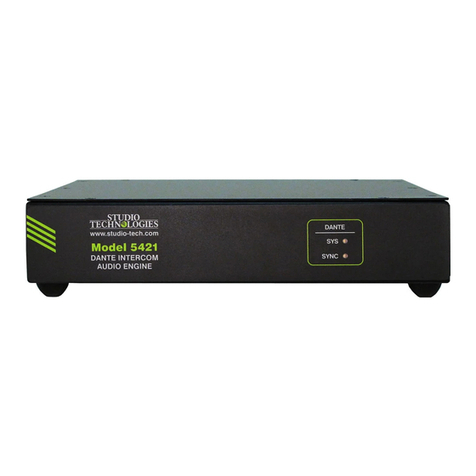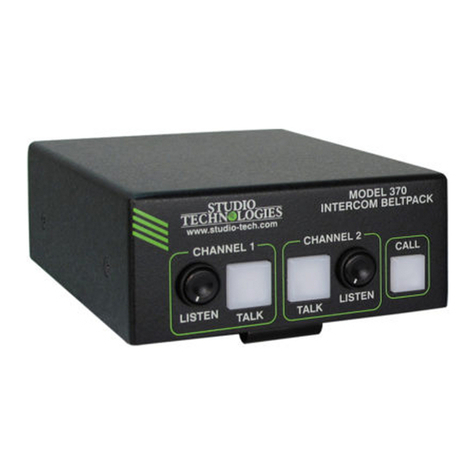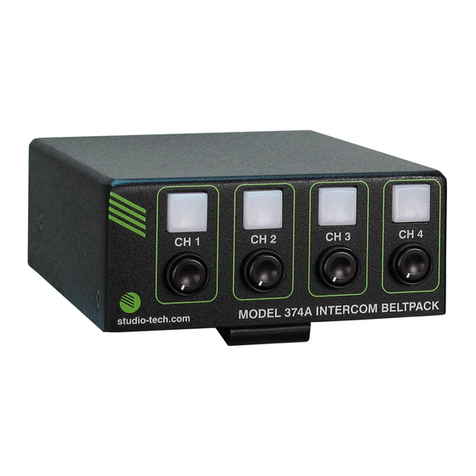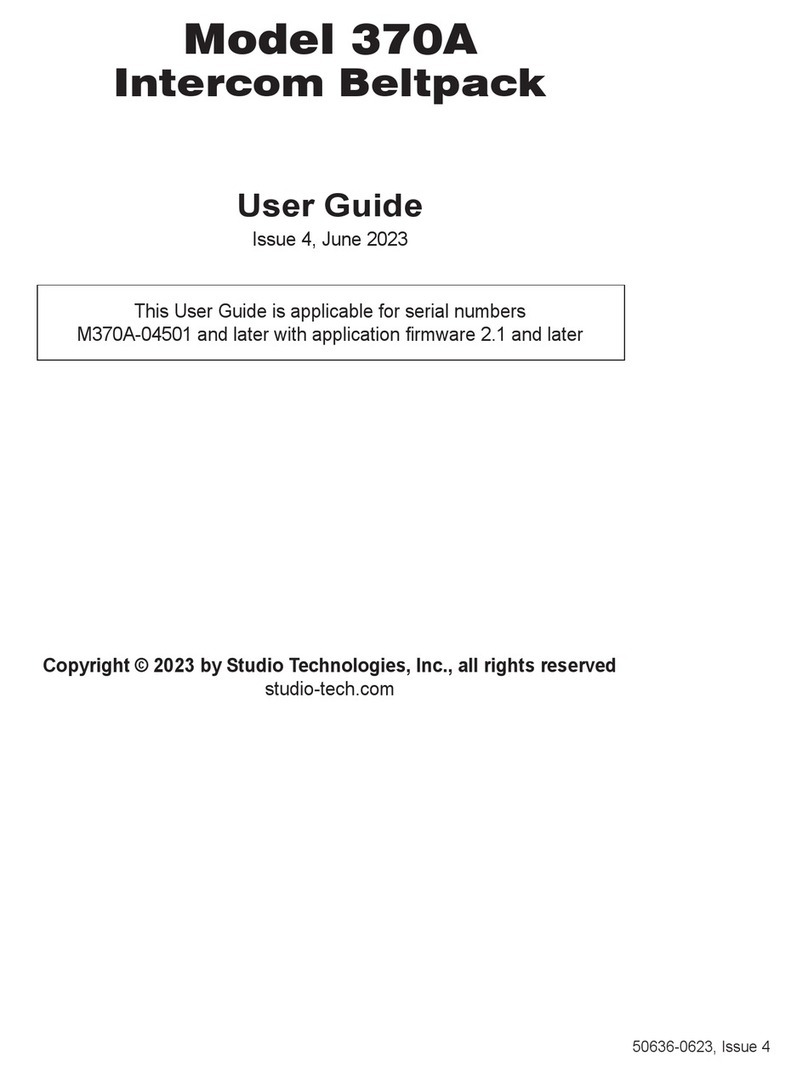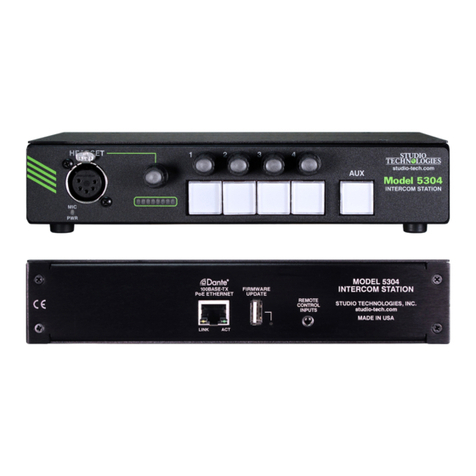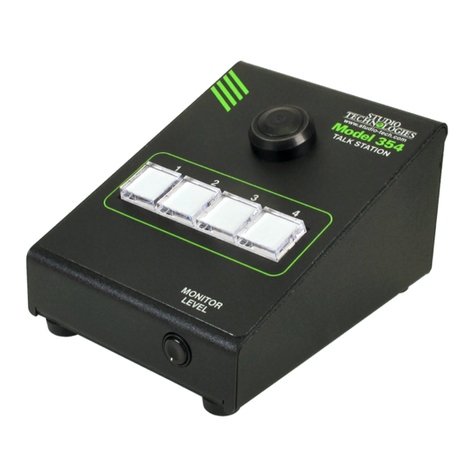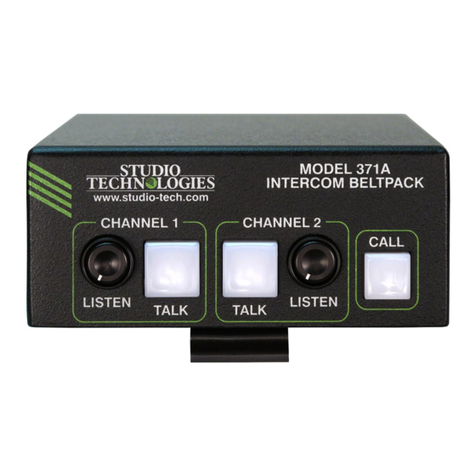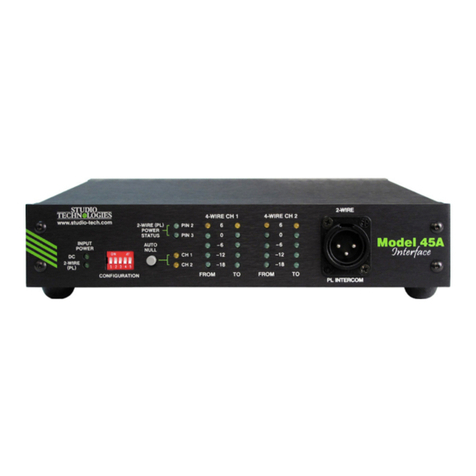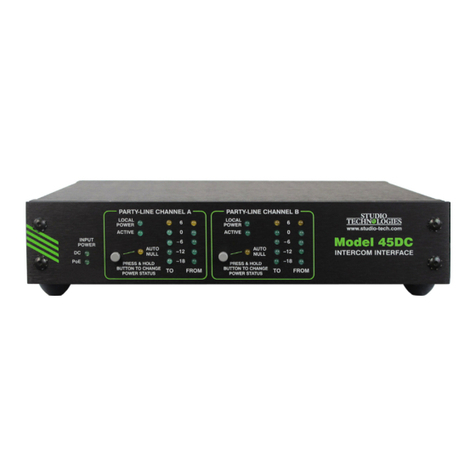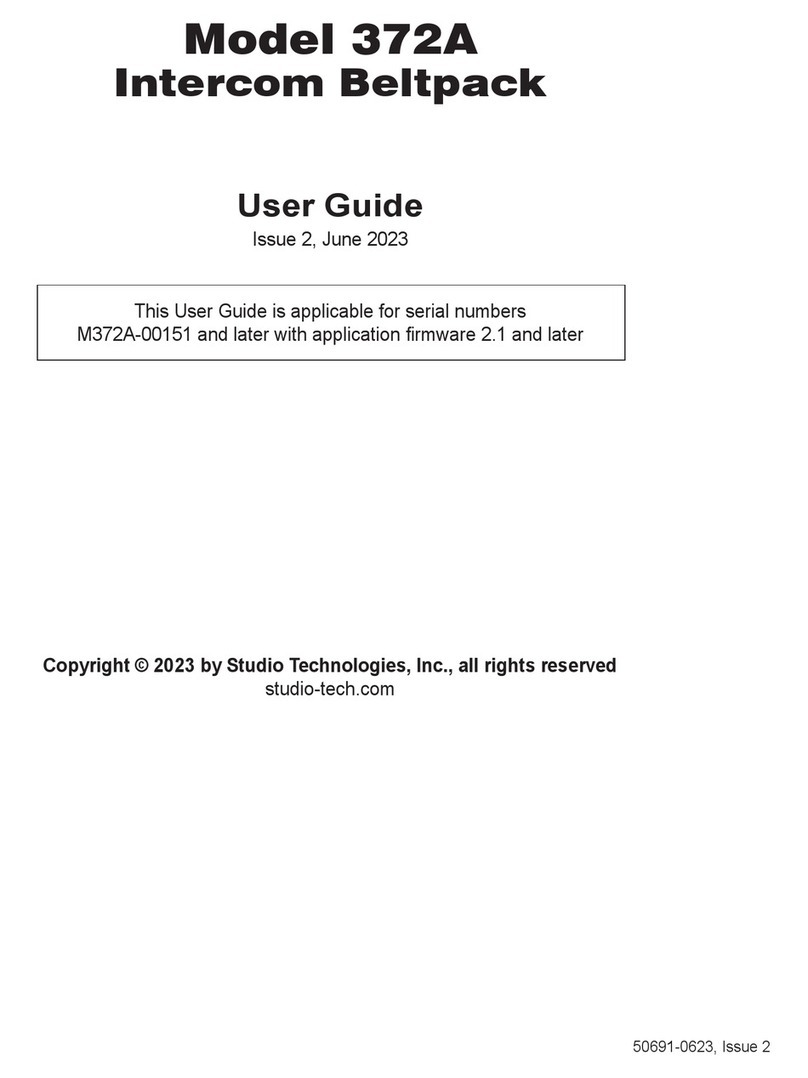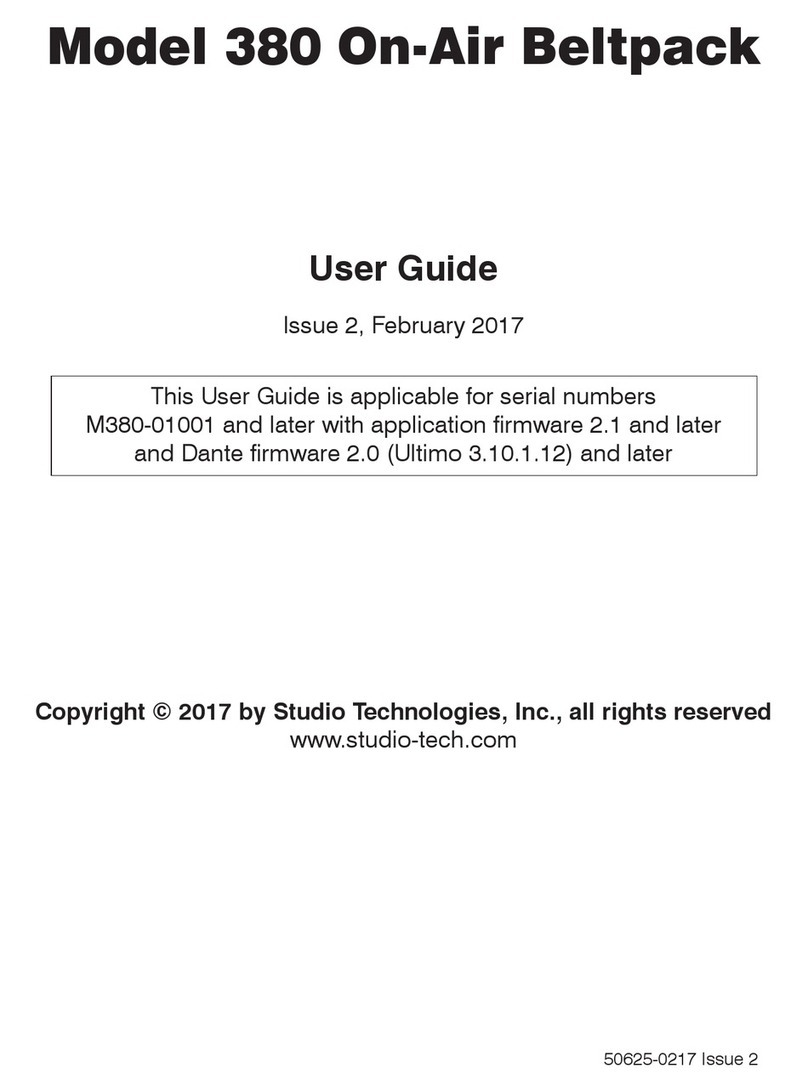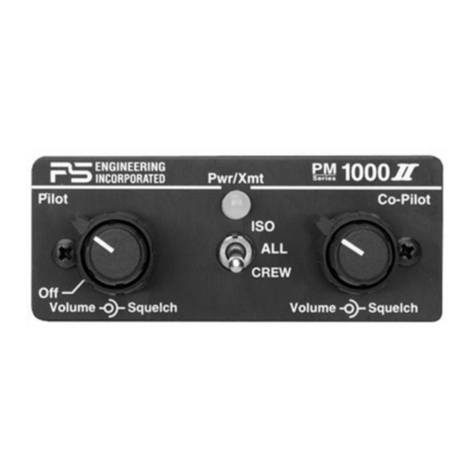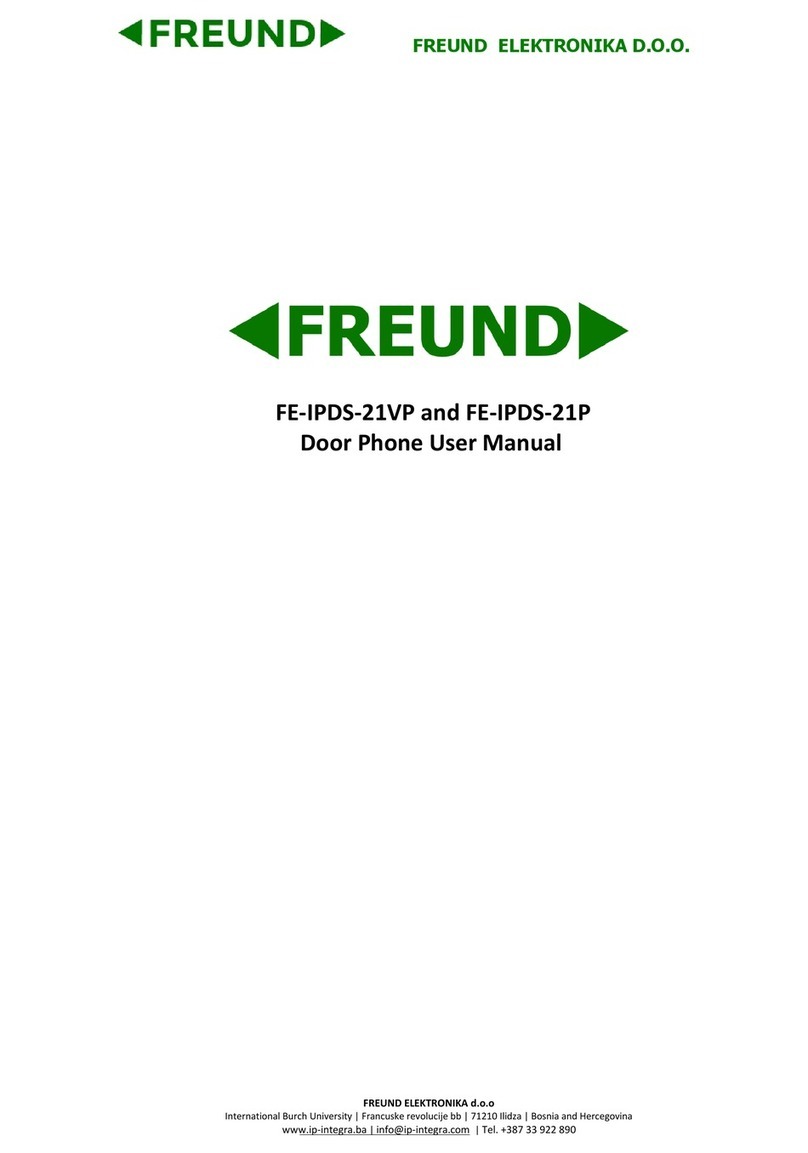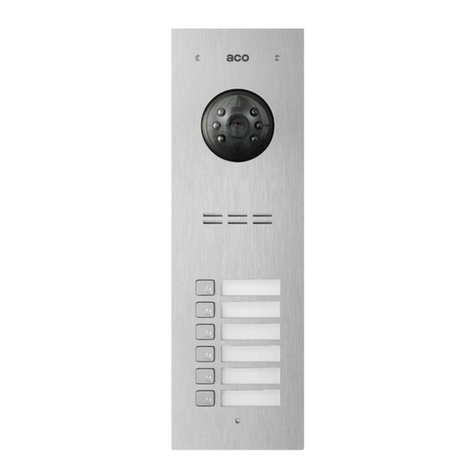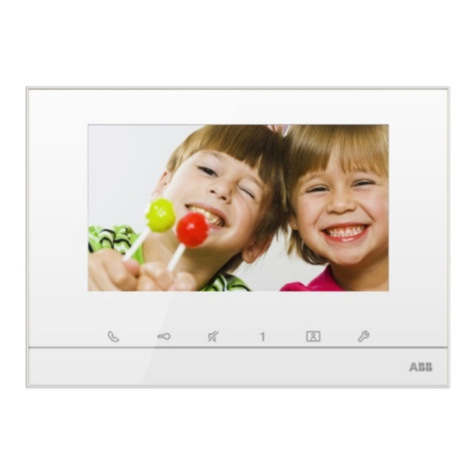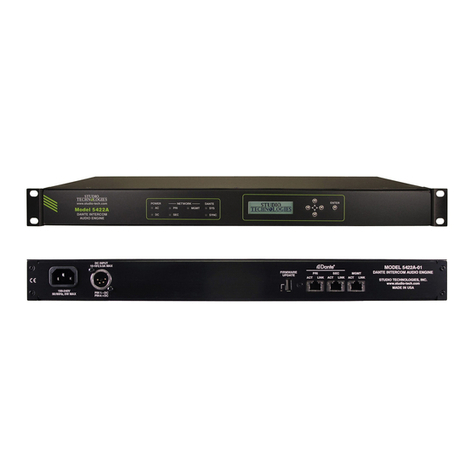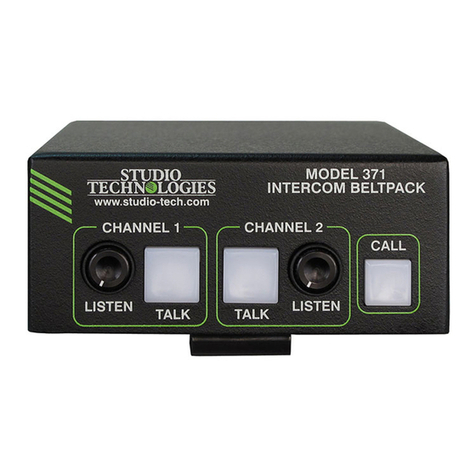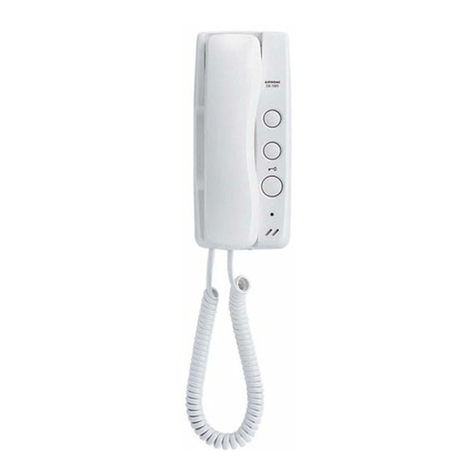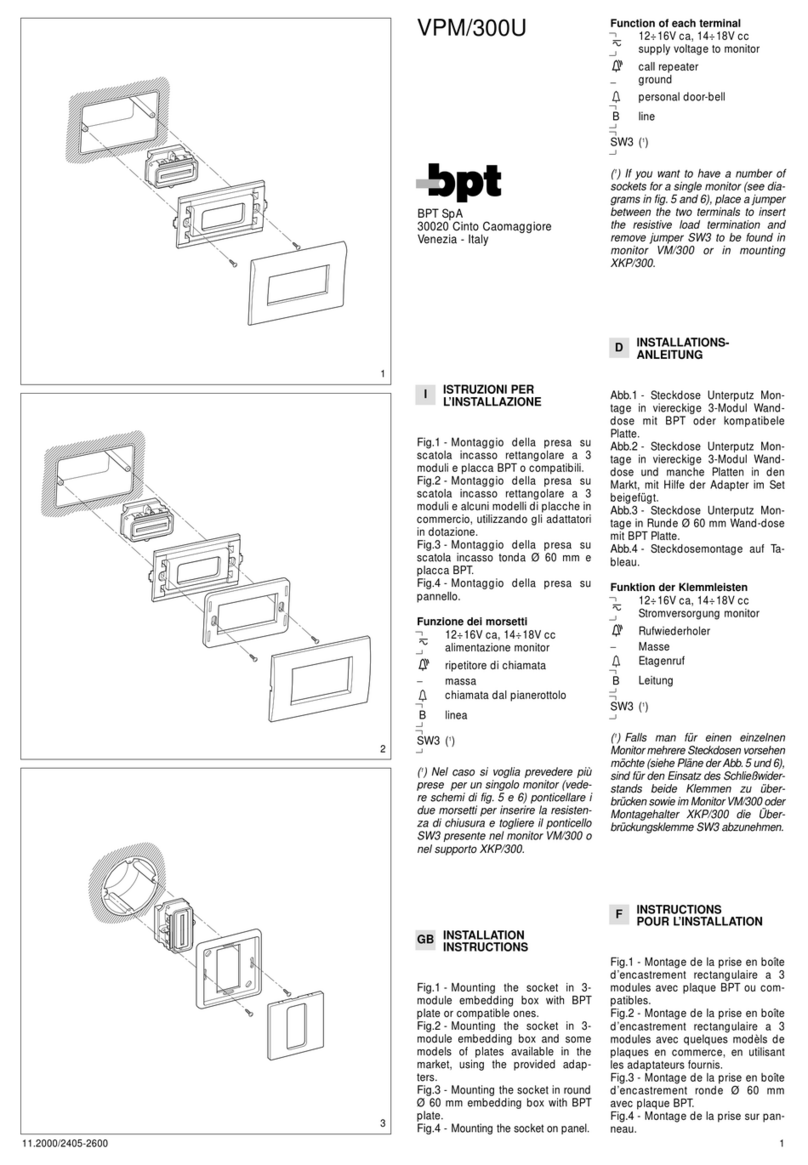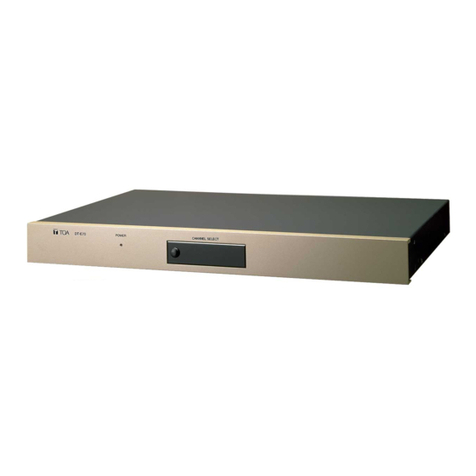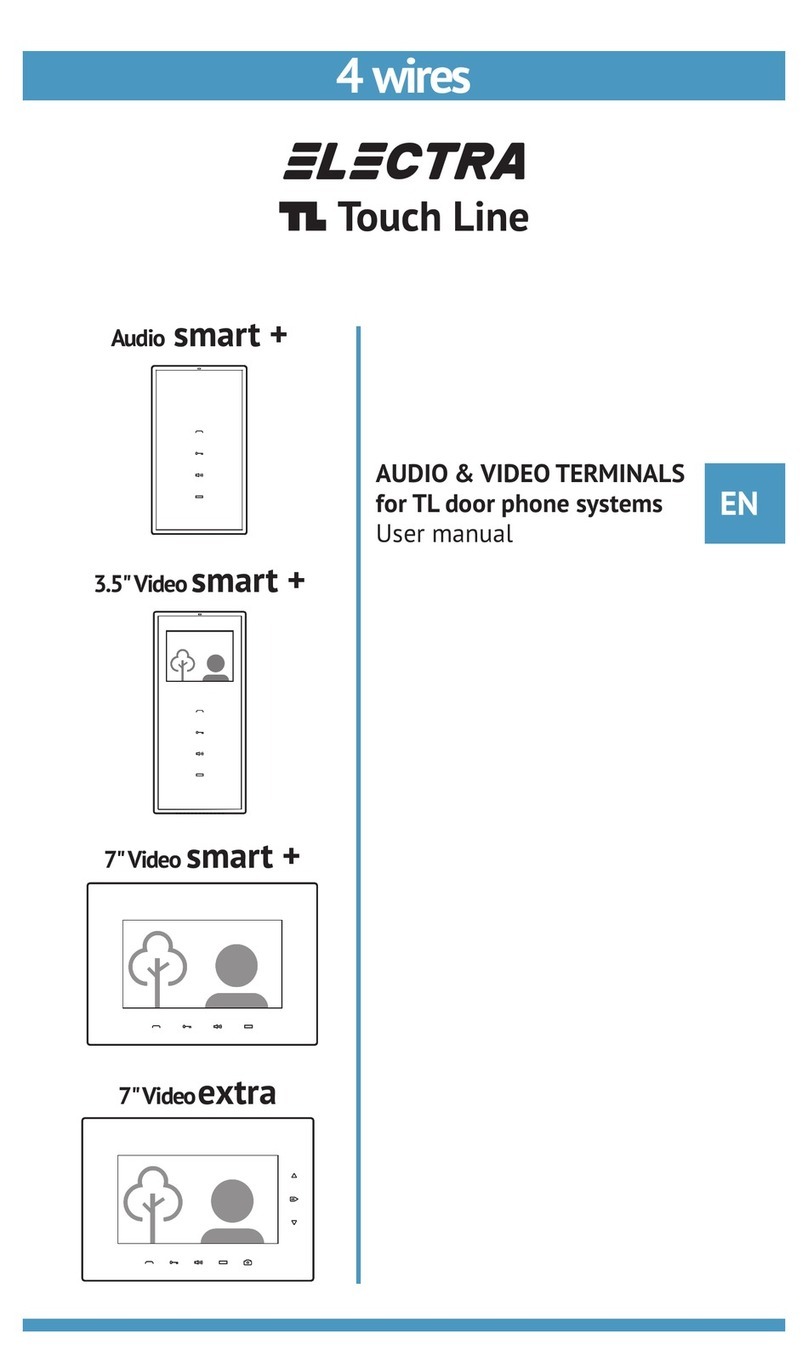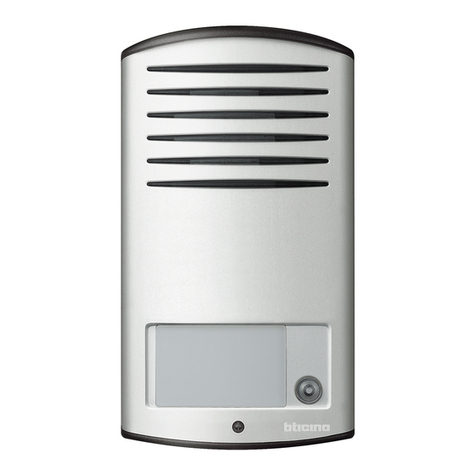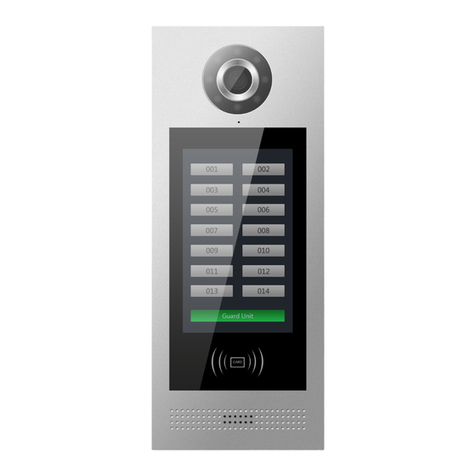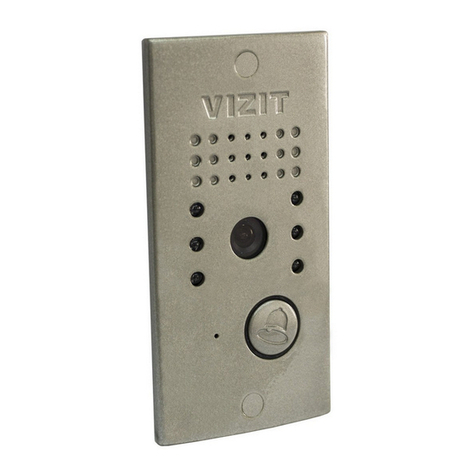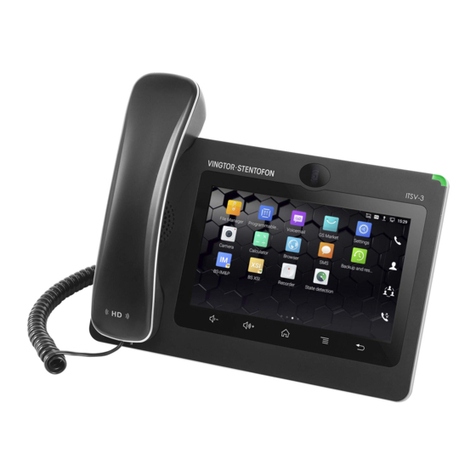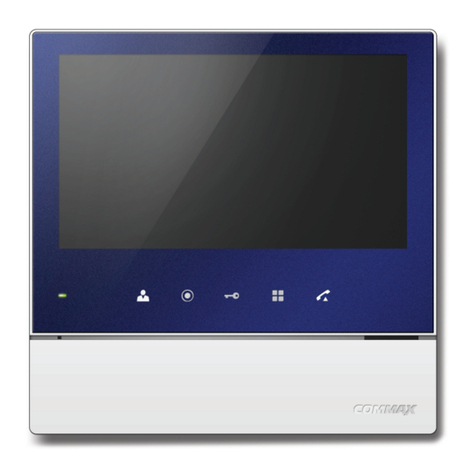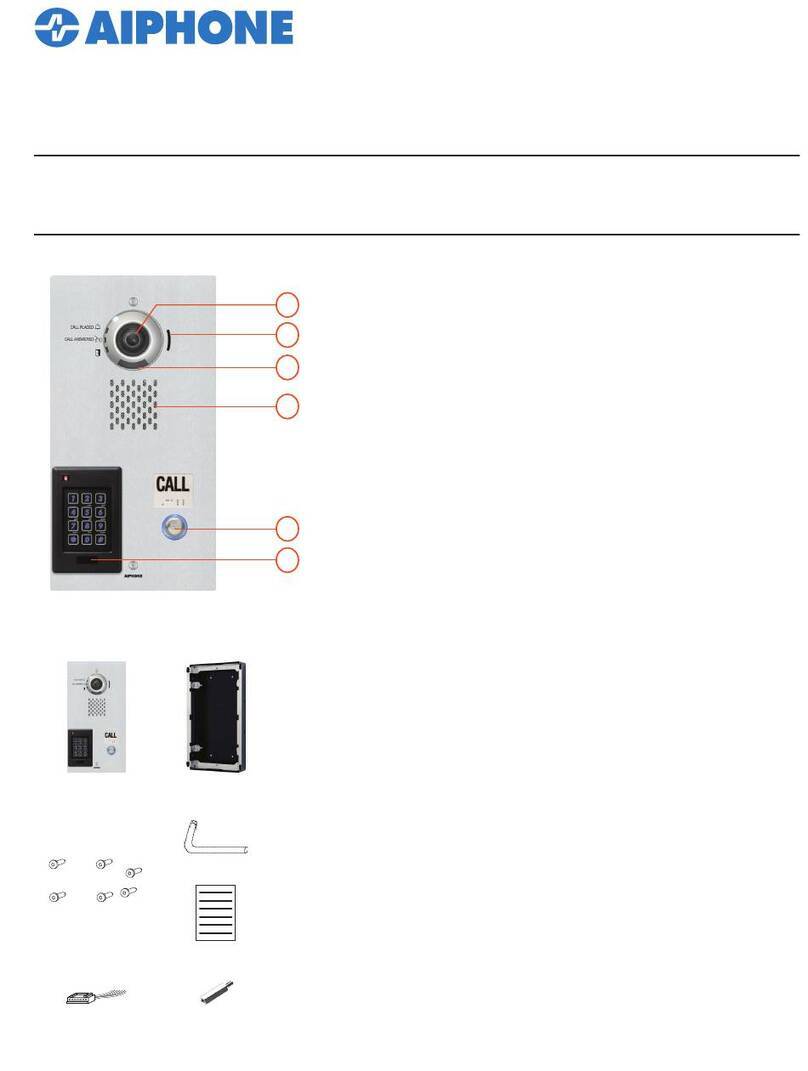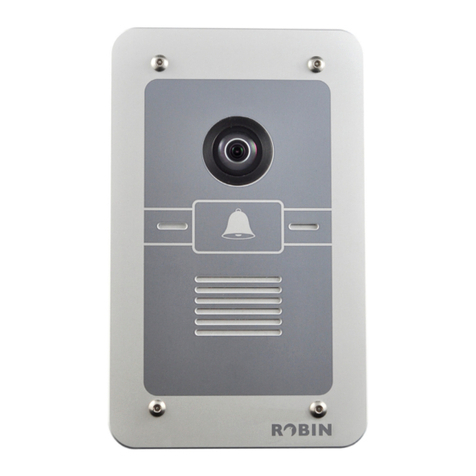
Model 370A User Guide Issue 2, August 2019
Studio Technologies, Inc. Page 11
MODEL 370A
INTERCOM BELTPACK
not require microphone power. The on/off
status is displayed by way of a red LED,
labeled MIC POWER, that is located adja-
cent to the headset connector.
Note that the Model 370A cannot supply
P12 or P48 phantom power that may be
required for balanced condenser (capaci-
tor) microphones. This should not pose an
issue as this type of microphone is essen-
tially never associated with a headset that
would be used for intercom applications.
Microphone Input – Gain
Choices are 22 dB, 30 dB, 42 dB, and
48 dB.
Dynamic microphones have an output
level that is typically lower than that provid-
ed by electret microphones. As such, the
42 or 48 dB gain settings will probably be
appropriate for them. Electret microphones
often have internal circuitry which provides
a relatively high output level. The 22 and
30 dB gain settings will typically be appro-
priate with this type of microphone.
When a dynamic microphone is connected
to the Model 370A the 42 dB gain setting
may be correct for many applications. Set-
ting the gain for 48 dB may be helpful in
some applications, such as with headsets
that have a low microphone output level.
The 48 dB gain setting may also be use-
ful when the Model 370A is going to be
deployed at events where users are not
able to speak at normal levels, e.g., sport-
ing events such as golf tournaments where
“whispering” may be necessary.
Electret microphones typically have a
higher output level due to their internal
preamplifier circuitry. As such, less pream-
plifier gain may be required. Selecting the
22 or 30 dB gain setting will probably be
appropriate in these cases.
The compressor active LED, labeled
COMP and visible adjacent to the headset
connector, can act as a guide when setting
the microphone preamplifier gain. Dur-
ing normal talk operation the compressor
active LED should light intermittently. If,
for example, with a dynamic microphone
the LED rarely lights and the preamp gain
is set to 42 dB it might be a good idea to
change it to 48 dB. If the LED is lit fully dur-
ing normal talking in a situation where the
headset has an electret microphone and
the gain is set for 30 dB, changing it to
22 dB might be warranted.
Headphone Output Channel Routing
Choices are Left, Right, and Left and Right.
Two audio input sources (Dante receiver
channels) can be assigned to the head-
phone output channels using the Dante
Controller application. How these two
audio signals are routed to the Model
370A’s headphone output channels can
be configured using this configuration
choice. The three options provide flexibility
in how the audio sources are presented
to the user. When using a stereo (“double
muff”) headset it’s common for the audio
input sources to be routed to both the left
and right channels. But the Model 370A’s
flexibility allows each source to be inde-
pendently configured for sending to the left
only, right only, or both left and right head-
phone channels.
When using a stereo headset sending all
inputs to both channels is often referred to
as a dual-channel mono output. If a mon-
aural (“single muff”) headset is used the
Left configuration option allows the two
input channels to be combined to monau-
ral so that the listener can simultaneously
hear both sources.




















